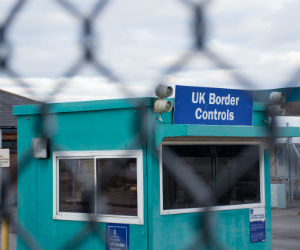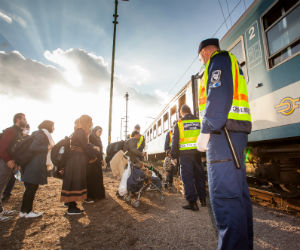Europe faces an unprecedented migrant crisis, the largest ever since the World War II. How can the security industry help the situation?
Europe is currently facing an unprecedented migrant crisis, the largest ever since the World War II. Years of war and hardships have forced many from the Africa, Middle East, and even South and Central Asia to take the challenging journey to Europe. Many are dying on the way, and even for those who make it to the other side, life is not as easy as they hoped.
The international media has left no stone unturned in presenting the various aspects of the issue, which, at this point, is more political than humanitarian. But from a security industry perspective, the issue is more practical. At the ground level, the problem of people trying to enter a country in large numbers is a border control issue.
But what makes things complicated here is that the political and humanitarian angle of the matter makes it highly sensitive. For instance an attempt to collect the biometric details of refugees by European officials faced resistance, even leading to a riot. The refugees insisted that they should be registered in the country they wish to go to and not be forced to give biometric details.
But while such humanitarian causes cannot be ignored, authorities have to ensure that the provisions are not misused. So how can the security industry help the situation? In this article we take a look at the border security solutions that are in place at European frontiers, their effectiveness, and potential for improvement.
Electronic security's purpose in border control
 Border control solutions are at their best
Border control solutions are at their best
when integrated with different systems.
Border security issues, typically in cases such as the current European migrant crisis, are intricately connected to the political climate of the region. Jean-Luc Sandral-Lasbordes, who is in charge of Border Surveillance Department at Thales Group explained that border security systems have to be implemented in accordance with a country's government policies.
Electronic security technology plays a crucial role in this, and they are present at all the levels of the protection tasks, i.e., surveillance, decision and intervention. They significantly improve the process by:
- Simplifying the procedures and the tasks of the border guards who can be more focused on the real issues.
- Allowing efficient control of people and vehicles.
- Providing better performance for detection and identification, reducing false alarms and inadequate decisions.
- Reducing the reaction time when a threat or an issue appears.
- Providing a real time and accurate status of the situation to the authorities and all the stakeholders of the border control.
- Reducing the necessary manpower to survey the frontier, and so decreasing the associated costs.
"Frontier surveillance, knowledge of the situation and checking of people, are the main objectives of these solutions which can to be used also for the movement of population and massive immigration, in compliance with political decisions," Sandral-Lasbordes said.
At present, the security solutions that exist at European borders are quite strong and those if any inadequacies are found they are quickly rectified. For example, foreseeing immigration concerns, Hungary recently built a fence across the border. Several other solutions are already in place.
Common security solutions at European borders
 Border issues are common not just
Border issues are common not just
in Europe but other parts of the world too.
A white paper from Magal Security Systems points out that while there are major requirements at Western European borders, strict limitations to protect the environment, wildlife and aesthetics necessitate less use of physical barriers and more preference for virtual fences and volumetric sensors.
The solutions that are currently deployed include:
- Buried cable: This covers long border lines with a virtual and concealed detection zone, making it nearly impossible to beat detection.
- Microwave sensors: These also create virtual fences, but unlike the buried cable they require a clear area with no vegetation between the transmitter and the receiver. They are ideal to fill gaps or serve as virtual gates.
- Radars: Ideal for open and flat environment with no or very little traffic. Useless in forests and locations where the vicinity of the protected line is subject to daily traffic.
- Video and thermal imaging cameras: Equipment in this category may augment the main detection layer and facilitate threat analysis, yet they are limited by the need for line of sight, and their performance is severely degraded in fog, strong wind, heavy rain, or snow.
In populated areas, physical fences or walls may be required as it is almost impossible to receive early warnings from sensors due to interference from non-relevant noise.
At border crossing sites, security solutions are built around a combination of regular building security with tight interface to the overall border perimeter intrusion detection systems. This typically includes smart gates with access and gate control, surveillance cameras, inspection devices for weapons and drugs, and people tracking systems.
Security beyond the borders of Europe
In Sandral-Lasbordes' opinion, the borders of the Schengen area are fairly well-equipped for the situation. Adaptation of some specific new means could be required, but not as a new global strategy.
Nevertheless, he still pointed out two major issues that exist in Europe - the integration of land border surveillance and maritime border surveillance. Ideally, these should follow an collaborated approach, with interoperable command and control centers and international connections to ensure easier data exchange.
Requirements for border control differ from place to place, and what is needed in Europe may not be what's perfect in some other part of the world. But perhaps a lesson the security industry can take from the current crisis is the importance of preparation and implementation of solutions, along with right integration. Most importantly though, this has to be done with a clear understanding of the political situation of the region.